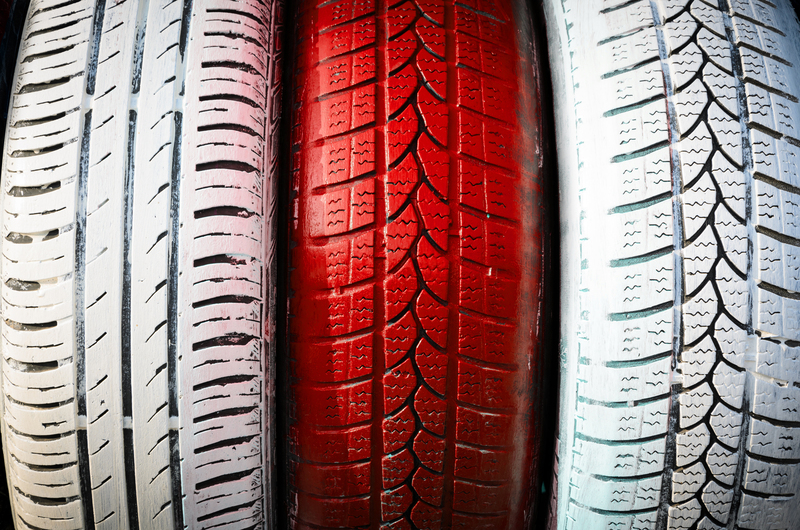Step-by-Step Money-Saving Guide for Bulky Waste Disposal
Bulky waste disposal can be an overwhelming task, especially when large items clutter your home or business and you're unsure how to tackle them affordably. Whether it's old furniture, appliances, mattresses, or electronic waste, proper and cost-effective bulky item disposal is crucial for both your wallet and the environment. In this detailed guide, we'll walk you through every step to save money while responsibly getting rid of your oversize waste.
What is Bulky Waste?: Understanding Bulky Item Disposal
Before planning your removal strategy, it's essential to know what qualifies as bulky waste. These generally include items that are too large for regular curbside collection, such as:
- Sofas and couches
- Refrigerators, stoves, and other large appliances
- Mattresses and bed frames
- Carpets and rugs
- Wardrobes, desks, and other heavy furniture
- Large electronics (TVs, computers, printers, etc.)
*Key tip*: Check your local municipality's definition before disposal to avoid unnecessary fees.*

Step 1: Assess and Sort Your Bulky Waste
The first and most important step is to assess what you have. Spend time gathering all unwanted bulky items. Then, sort them into categories:
- Reusable or Donate-worthy Items
- Items for Recycling
- Pure Waste (Landfill)
Why Sorting Matters
Sorting is not just about being organized; it saves money. Disposal costs are significantly reduced when you donate or recycle instead of paying for trash pickup.
Step 2: Explore Free and Low-Cost Bulky Waste Disposal Options
Not all disposal routes come with a hefty price tag. Here's how you can dispose of bulky waste on a budget:
Donation
- Charities like Habitat for Humanity, Goodwill, and the Salvation Army often take furniture and appliances in usable condition. Some even offer free pickup.
- Check local churches, shelters, or community centers for donation needs.
Give Away or Sell
- Use online platforms such as Craigslist, Facebook Marketplace, or Freecycle.
- Host a garage sale--you might actually turn bulky waste into cash!
Recycling Centers
- Many cities provide free recycling drop-off on certain dates for electronics and appliances.
- Check for specialized recyclers for e-waste, metals, and mattresses. Fees are usually far lower than landfill costs.
*Hot tip*: Contact your waste authority for a list of free or discounted drop-off locations for bulky waste.
Step 3: Use Municipal Bulky Waste Collection Services
Most towns offer periodic large item collection services as part of your waste management fees. Here's how to benefit:
- Sign up for scheduled pickups: Find the schedule on your city website or call to request service.
- Know the rules: Each program specifies item size, types allowed, and how much can be collected per household.
- Prepare items correctly: Failure to comply can lead to fines, so follow instructions regarding placement and bundling.
Save Even More
Some municipalities limit the number of free bulky item pickups per year. Plan your disposals accordingly to avoid extra charges.
Step 4: Share and Split Costs with Neighbors
If your community doesn't offer free services, or you have a large amount of waste, consider sharing a skip bin or collection service with neighbors. Here's why this works:
- Bulk discounts: Hiring a single skip for several households is cheaper per person.
- Environmental benefits: Fewer trucks mean less pollution.
- Build community: Work together to keep the neighborhood clean.
Step 5: DIY Transportation and Disposal
If you own or can borrow a vehicle suitable for large loads, self-hauling your bulky waste can cut costs substantially. Here's how to optimize your savings:
- Check dump fees: Some landfills or transfer stations offer reduced rates for residents.
- Load efficiently: Maximize each trip to minimize fuel costs.
- Time it right: Avoid peak times that might levy surcharges.
*Tip*: Enlist a friend to help with the heavy lifting--safety first!
Step 6: Rent a Skip Bin or Dumpster Only if Needed
A dumpster or skip bin is often the most expensive bulky item disposal option, but sometimes it's necessary, especially during renovations or large cleanouts. To keep expenses low:
- Compare prices from multiple providers.
- Choose the right size--don't overestimate and pay extra for unused capacity.
- Load correctly--disassembling items before tossing them can save space.
- Beware of prohibited items that incur extra fees.
Save Money on Rental Duration
Plan ahead and fill the bin quickly to avoid paying for extra days. If your project time extends, you may be able to negotiate a lower extended rate.
Step 7: Upcycle or Repurpose Bulky Waste
One person's trash can be another's treasure! Upcycling or repairing keeps items out of landfills and can add value to your home or community. Ideas include:
- Turning a broken dresser into shelves or a garden planter
- Refurbishing an old table for a DIY project
- Converting pallets into outdoor furniture
- Repurposing washing machine drums as fire pits
*Creative bonus*: Upcycling might even be a fun bonding or business opportunity (sell repurposed items for profit!).
Step 8: Avoid Hidden Fees and Extra Charges
When disposing of bulky items, it's easy to overlook added costs. Here's how to prevent surprises:
- Confirm what's included in price quotes (e.g., labor, taxes, dump fees).
- Remove non-allowed items (hazardous waste, chemicals, tires) to avoid fines.
- Check for permit requirements--placing a dumpster on public property may require city approval.
Step 9: Research Local Regulations
Rules for bulky waste management vary widely by region. To guarantee eco-friendly and affordable bulky waste disposal:
- Consult your city's website or call the waste management department.
- Ask about free or low-cost programs for residents or special assistance for seniors and disabled persons.
- Stay informed about recycling incentives or designated bulk drop days.
Step 10: Maintain and Minimize Bulky Waste Generation
The best way to save money is to reduce the amount of bulky waste you create in the first place. Adopt habits such as:
- Buy quality, durable items that last longer.
- Repair instead of replace.
- Rent or borrow infrequently used large items.
- Refuse unnecessary packaging or products when possible.
The less you buy and toss, the less you'll have to spend on disposal!

Frequently Asked Questions: Bulky Waste Disposal on a Budget
How do I avoid bulky waste collection charges?
Explore donation, recycling, and municipal free pickup options before hiring a removalist or renting a dumpster.
Can bulky waste be recycled?
Yes, many bulky items are recyclable--particularly metal appliances, mattresses (springs and foam), and some electronics. Contact local facilities for specifics.
Is illegal dumping ever justified to save money?
Never. Illegal dumping harms the environment and leads to heavy fines or legal action. Responsible disposal is always the best choice.
What if I can't lift heavy items?
Check for charities that pick up, city-run collection services, or ask family/friends for help. Some commercial haulers offer disassembly and lifting as part of their fee--just clarify up front.
Conclusion: Save Money and the Environment with Smart Bulky Waste Disposal
Responsible bulky waste removal doesn't have to be expensive. By following these step-by-step strategies, you'll not only cut costs but also reduce landfill use and support your community. Sort and donate what you can, tap into free municipal services, recycle responsibly, and only pay for removal when it's absolutely necessary. Finally, consider starting habits that help you avoid bulky waste generation in the future--your wallet, and the planet, will thank you!
Ready to tackle your large item disposal? Start planning today and watch the savings roll in!
